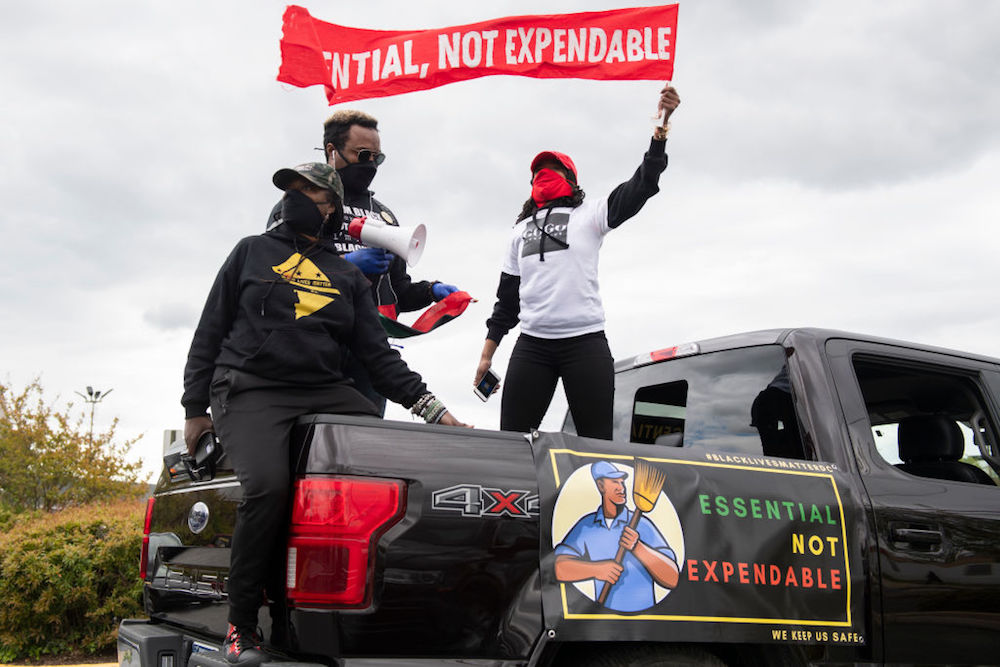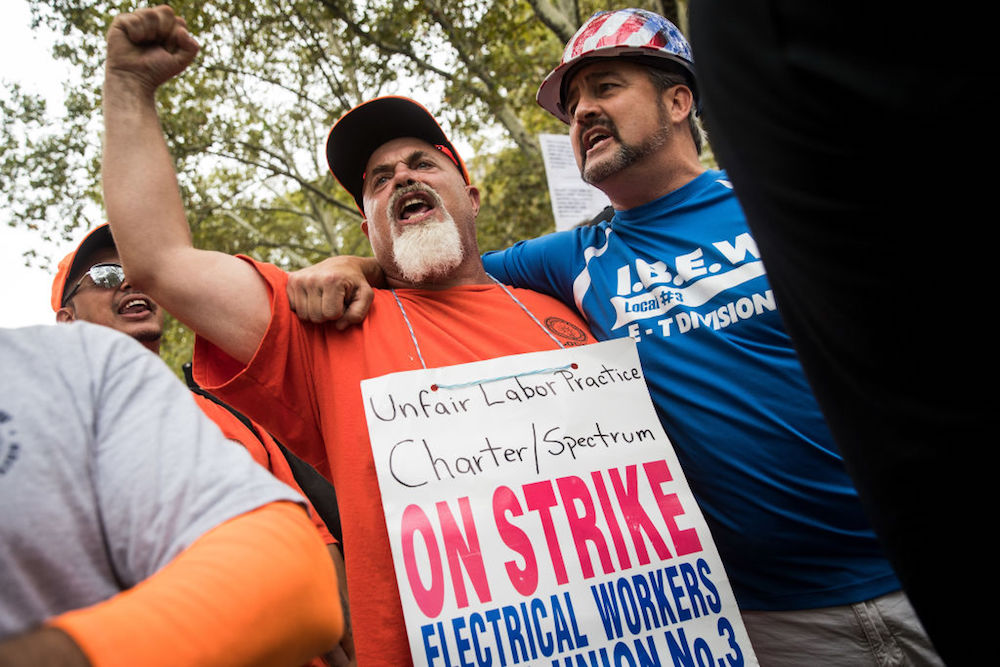While millions of taxpayers received CARES Act stimulus checks in the past couple of months, for many millions more, one will never arrive. That’s because undocumented immigrants and their families weren’t covered in the $2 trillion plan. That’s an estimated 6 million tax payers who help fund schools, roads, fire departments, and even the United States Department of the Treasury — the very body tasked with cutting the checks that undocumented people and their families won’t get. While there were some notable attempts to fill this gap — both through individual state efforts and bills put forward in the House and Senate — for the most part, undocumented people remain on their own.
Get Talk Poverty In Your Inbox
Generally, in non-coronavirus times, undocumented immigrants pay more in taxes than they receive in benefits from the federal government, and the current social safety nets of Medicare, Medicaid, Social Security, SNAP (food stamps), and unemployment benefits don’t usually cover them. The pandemic has exacerbated the lack of governmental support and income inequality — undocumented people don’t work jobs that can be done from home, which has either left them entirely without income during the shutdown (as is the case with restaurant workers) or put them at much higher risk of coming into contact with the coronavirus (since undocumented people are disproportionately likely to be essential workers in fields with poor protections, like farmwork or meatpacking).
That means undocumented people are facing a particularly brutal choice: Either continue to work during a pandemic or lose out on money to purchase food and other necessary resources. Vera Parra, communications director and organizer with Cosecha, a grassroots movement that advocates for undocumented people, explained it like this: “There’s a choice that families are having to make between dying of hunger or dying of coronavirus.”
Now grassroots organizations and local leaders are scrambling to build a financial safety net that will help undocumented folks feed and house themselves during the pandemic because — as long as Mitch McConnell refuses to address the issue — no federal institutional support is coming.
The San Diego Immigrant Rights Consortium, a collective of over 50 organizations, has begun to create a safety net where there previously was none. Demand is high: bills still need to be paid even if there’s no way to pay them. Serrano said the consortium received over 4,000 applications for its $500 grants, and so far they have been able to award 200 of those applications. While local community members and elected officials have offered supplies and some financial support, Serrano said that “Donations are definitely one of our biggest needs: there is more need than there is funding.”
The Cosecha fund is hoping to find some support by redistributing stimulus checks. There are a number of people who received CARES Act checks but do not urgently need the funds, either because they have not lost out on work or they would be eligible for unemployment benefits if they do lose their jobs in the future. The Cosecha fund for undocumented residents is asking individuals who are able to donate their stimulus check, either the full amount or a portion of it, to undocumented folks. Their social media campaign raised $1 million in their first round of fundraising, and they’re currently in the process of redistributing the funds to thousands of families.
Since the economy will likely continue to struggle for months, if not years, many undocumented people will continue to be reliant on donations, advocacy, and organizing to stay afloat. Parra said moving forward will require pushing the state and other governing bodies to make more funds available and “demand to be included” in future economic relief packages. Carolina Martin Ramos, the director of programs and advocacy at Centro Legal de la Raza in Oakland, California, said given the fact that the labor of undocumented folks and people of color helped to create and sustain the state’s wealth, the lack of adequate and well-funded support networks is, “just more evidence that we really treat some people as disposable and less deserving or less important.”
“It’s really hard,” said Autumn Gonzalez, an organizer with Norcal Resist, an immigrant rights organization located in the Bay Area. Because the fund relies mainly on community support and they don’t have any grant funding, “We’re going to see people evicted [and] enter that cycle of homelessness,” Gonzalez said of the worst-case scenario. “Going down that road would be a nightmare for so many thousands of families.”
Moving forward, Gonzalez said Norcal Resist will apply for grant funding, though it’s a competitive process. Other than that, they’re hoping to reach out to other folks in the area who might be sympathetic to the cause; “it’s definitely a constant worry for us.” And even as businesses start to reopen and life enters a new normal, back rent and lost wages will continue to be a concern.
Like the Norcal Resist fund, which has been supported by the local community, Serrano says that San Diego community members have stepped up. Sustaining that progress will be difficult, she said, but those with the capacity to keep donating, like private companies, should. Ramos sees a potential solution in couching mutual aid and grassroots funding work with local political advocacy. Centro Legal has been working with the City of Oakland and officials from Alameda County to negotiate a stipend for their fund and map out what rent forgiveness (as a long-term solution to housing insecurity) might look like.
Either way, Gonzalez said, “We all keep pushing because we see that there’s a need that’s not being addressed anywhere else. We know that we have to keep doing the work.”











